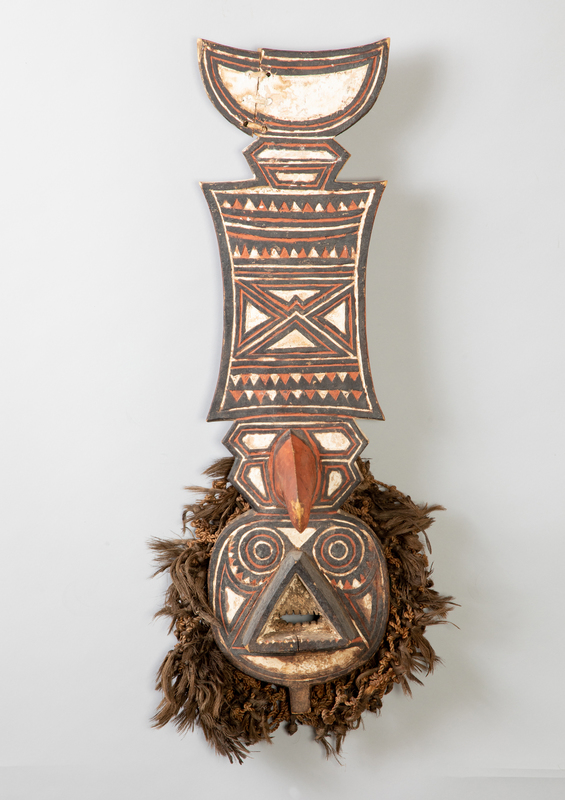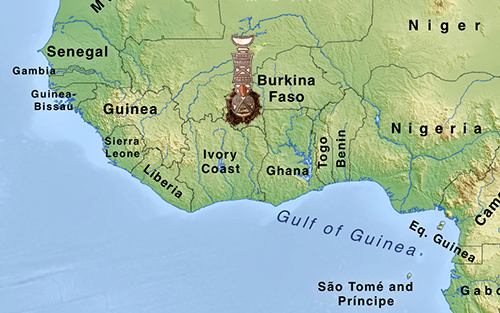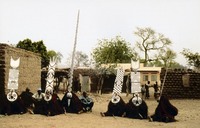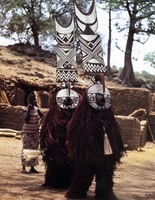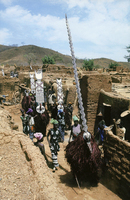Plank Mask, nwantantay
Bwa people, Burkina Faso
20th century
Wood, pigment and fiber; 18 1/8 x 9 13/16 x 7 7/16 inches (46 x 25 x 24 cm)
Collection of Allen and Barbara Davis
The Bwa live in central Burkina Faso and southeastern Mali and are often referred to as Bobo Oule in the older French ethnographic literature. They are well known within Burkina Faso for their masks, which are either representational and depict animals or abstract, like this nwantantay example, which has a stylized face surmounted by a tall, rectangular plank.
The majority of the plank masks consist of a large oval facial area with a protuberant round mouth through which the performer can see. Below the mouth are three black leaf shapes (triangles), and above are two great target eyes. The face is connected to the plank by a diamond or lozenge from which protrudes a downward-curving and very prominent hook. The plank is a vertical rectangle marked with geometric patterns in black and white, and sometimes red, and is surmounted by a large crescent with the opening turned up. On the back of the plank is a rendering of the full mask itself, a wonderful image play.
Nwantantay masks are face masks that are attached to a fiber hood that covers the head. The performer bites on a thick fiber rope that passes through the mask in order to secure the mask to his face. They are two-dimensional and do not extend to the back of the head.
All of the masks are covered with geometric patterns like a target, black-and-white checkerboards, crescents, zigzags, and so on, that are all colored with natural red, white, and black pigments. These patterns are the same as those used by the Mossi, Winiama, and Nuna (Nunuma) on their masks. Among the Bwa these geometric patterns represent the scars worn by initiated men and women. The most prominent and ubiquitous of these scars is the X or cross on the center of the forehead. Facial and body scarification is no longer commonly practiced in this area, but the traditional system of signs and symbols that are used in initiations survives on these masks.
The wooden plank masks function in many of the same ways as masks do among their Nuna and Winiama neighbors. The masks perform in public. They play an important role in initiations of young men and women and appear at burials and later at the memorial services. They perform at annual renewal ceremonies and at many dry-season events, including dances held on market days. The masks are owned by individual clans, and there is a rivalry among these clans, who compete with one another to create the most elaborate and innovative masquerades.
MJA
References
Roy, Christopher D. 1985. Art and Life in Africa: Selections from the Stanley Collection. Iowa City: University of Iowa Museum of Art.
———. 1987. “The Spread of Mask Styles in the Black Volta Basin.” African Arts 20 (4): 40–47, 89–90.
Roy, Christopher D., and Thomas G. B. Wheelock. 2007. Land of the Flying Masks: Art and Culture in Burkina Faso; The Thomas Wheelock Collection. Munich: Prestel.

